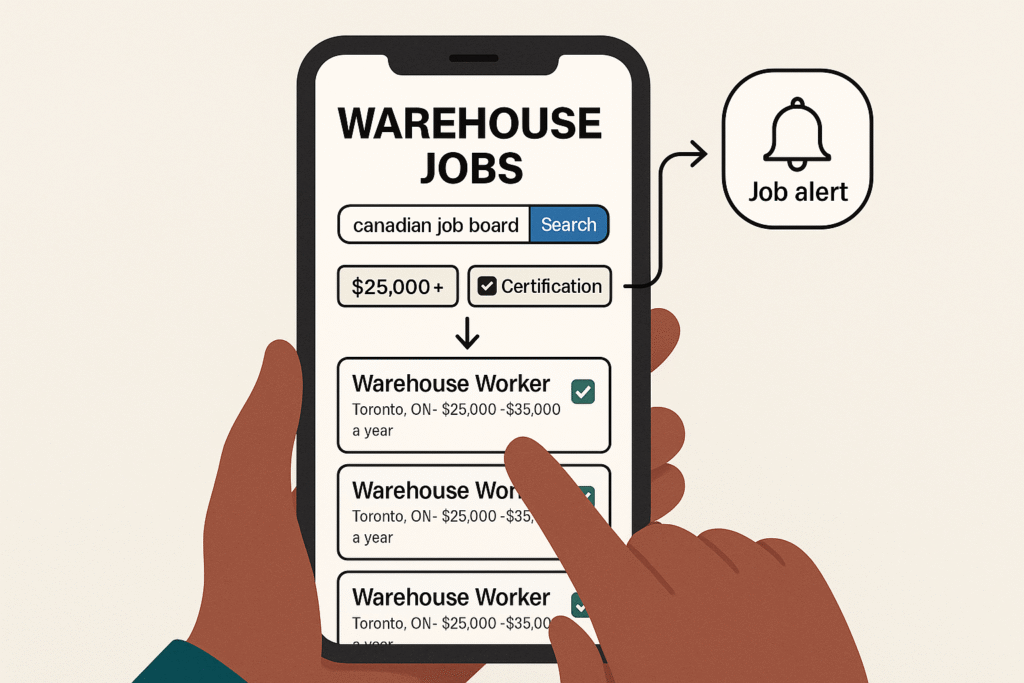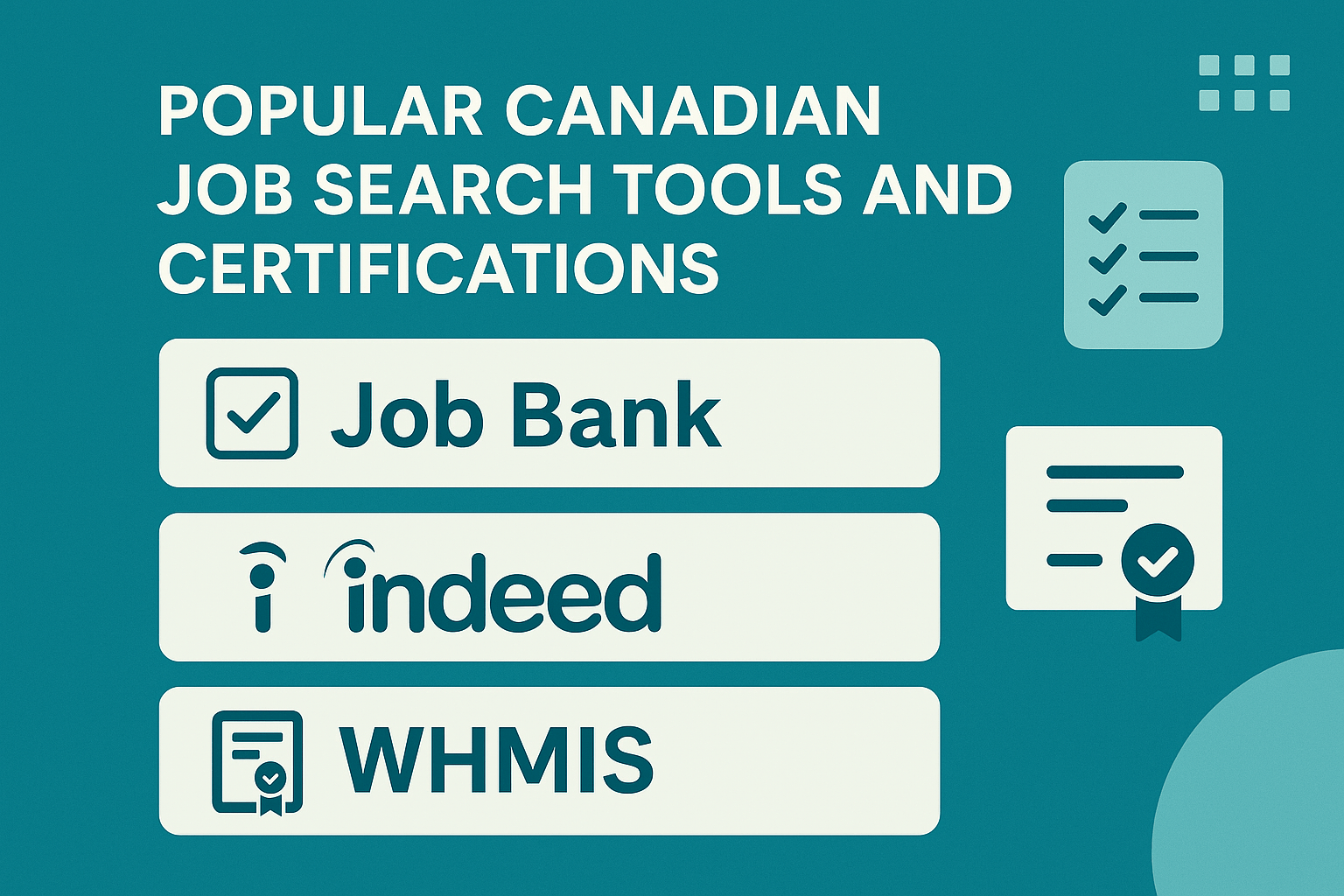Table of Contents
Introduction
Warehouse jobs in Canada are among the most accessible, in-demand, and increasingly lucrative options for job seekers. However, finding high paying warehouse jobs in Canada isn’t just about sending resumes—it’s about knowing where to look, how to apply strategically, and what skills employers are searching for.
In this complete how-to guide, you’ll learn how to:
- Identify high-paying opportunities within warehouse and logistics sectors
- Use top Canadian job portals effectively
- Understand skillsets and certifications that boost income
- Access tools and resources for job preparation and applications
Whether you’re a beginner or an experienced worker aiming to upskill or relocate, this step-by-step guide provides actionable advice to kickstart your warehouse career in Canada.
Time investment: 3–7 days to start applying effectively
Difficulty level: Beginner to Intermediate

Prerequisites / Requirements
Before diving into warehouse job applications, ensure the following:
- Basic physical fitness: Warehouse roles often involve lifting and standing for extended periods.
- Work authorization: Have a valid Canadian work permit or PR status.
- Language skills: Basic English or French proficiency is often required.
- Resume & references: Prepare an updated CV tailored to logistics roles.
- Certifications (optional): Forklift, WHMIS, or First Aid can boost your salary potential.
Time Commitment: 2–3 days for documentation preparation
Skill Level: Beginner-friendly; optional training recommended
Budget Planning: $50–200 for certification if needed (many free options available)
Step-by-Step Process
Step 1: Research the Canadian Warehouse Job Market
Explore high-demand cities like Toronto, Vancouver, and Calgary. Use platforms such as Job Bank Canada, Indeed, and Workopolis to identify which roles offer the best salaries.
Pro Tip: Focus on roles like Inventory Specialist, Forklift Operator, or Warehouse Supervisor for higher pay.
Common Mistake: Applying to roles without checking if they offer full-time hours or benefits.
Step 2: Optimize Your Resume for Warehouse Roles
Tailor your resume to highlight:
- Physical ability and stamina
- Safety awareness and certification
- Attention to detail and time management
Use bullet points and job-specific keywords to pass ATS systems.
Prevention Strategy: Use tools like Jobscan or Canva Resume Builder for optimization.
Step 3: Get Certified to Increase Your Value
Enroll in free or low-cost programs for:
- WHMIS (Workplace Hazardous Materials Information System)
- Forklift Operation
- Occupational Safety
These credentials can increase your salary by 10-25%.
Quick Fix: Many employers will reimburse training costs post-hiring—always ask.
Step 4: Use the Right Job Platforms
Top job boards for warehouse roles in Canada:
Set job alerts and filter by “Salary: High to Low.”
Pro Tip: Use LinkedIn to connect with logistics HR recruiters directly
.

Step 5: Apply Strategically with Customized Applications
Avoid mass applications. Instead:
- Read job descriptions carefully
- Tailor cover letters to each employer
- Follow up after submitting your application
Common Pitfall: Not adding references or missing resume keywords.
Step 6: Prepare for Interviews with Industry Insights
Practice answers for:
- Safety protocol questions
- Shift availability and flexibility
- Previous warehouse experience
Resources: Use YouTube or Glassdoor to see real warehouse interview questions.
Step 7: Relocate or Target High-Demand Regions
Consider temporary relocation to cities like Brampton, Mississauga, or Winnipeg where warehousing hubs are booming.
Expected Outcome: More job openings, higher pay, and growth opportunities.
Advanced Tips & Best Practices
- Network smartly: Attend logistics job fairs or join Facebook groups like “Warehouse Jobs Canada.”
- Follow up: Always follow up within 5–7 days of applying.
- Use employer filters: Look for employers with “Urgent Hiring” or “Sign-on Bonuses.”
- Night shifts and overtime: Opting for overnight shifts can raise income by 15–30%.
- Avoid scams: Never pay for a warehouse job offer—legit employers do not charge fees.
Optimization Strategy: Keep certifications updated and add soft skills like teamwork and punctuality to your profile.
Tools & Resources
Top Job Boards:
Resume Builders:
Certifications:
Community Forums:
- r/CanadianJobs (Reddit)
- Warehouse Canada Job Groups on Facebook
Comparison:
Free platforms like Job Bank offer verified listings while premium agencies may provide better job-matching support.

Measuring Success & Optimization
Track your progress with:
- Number of interview calls per 10 applications
- Time-to-hire (from application to job offer)
- Resume response rate
Use Excel or job tracker tools like Huntr or Teal. If responses are low, revise your resume or apply to higher-match listings.
Next Steps & Advanced Techniques
Once employed:
- Cross-train in roles like Inventory Analyst or Logistics Coordinator
- Explore certifications in Supply Chain Management
- Join industry associations like CITT (Canadian Institute of Traffic and Transportation)
Continue building a long-term logistics career with upward mobility.
Conclusion
Finding high paying warehouse jobs in Canada is not just possible—it’s achievable with the right plan. From refining your resume to obtaining key certifications and targeting booming regions, each step brings you closer to a fulfilling logistics career.
Apply today, stay proactive, and build a rewarding future in Canada’s thriving warehousing sector.
Take action now—start applying and get ready to land your dream warehouse job
How long does it take to get a warehouse job in Canada?
With a tailored resume and active applications, most job seekers find a position within 1–3 weeks.
What if I don’t have certification?
Many entry-level roles don’t require it, but WHMIS or forklift training can help increase your chances and pay.
Do I need experience to apply?
Not always. Many warehouses hire beginners, especially for packaging and general labor roles.
Where are the best cities for warehouse jobs in Canada?
Toronto, Brampton, Calgary, Vancouver, and Winnipeg are top locations with frequent hiring.
How can I boost my salary in a warehouse job?
Target roles with overtime, night shifts, and additional certifications like forklift operation or logistics software.
Internal Links
- Learn the basics in our [Warehouse Resume Writing Guide]
- Check our [Logistics Career Pathway Tutorial]
- Master advanced techniques with our [Forklift Operator Certification Guide]
External Links
- According to Job Bank Canada, warehousing is a high-demand sector
- WHMIS certification details at WHMIS.ca
- Resume building tips at Zety Resume Builder
Great warehouse jobs in Canada aren’t found—they’re strategically earned. Step up your game today.”





